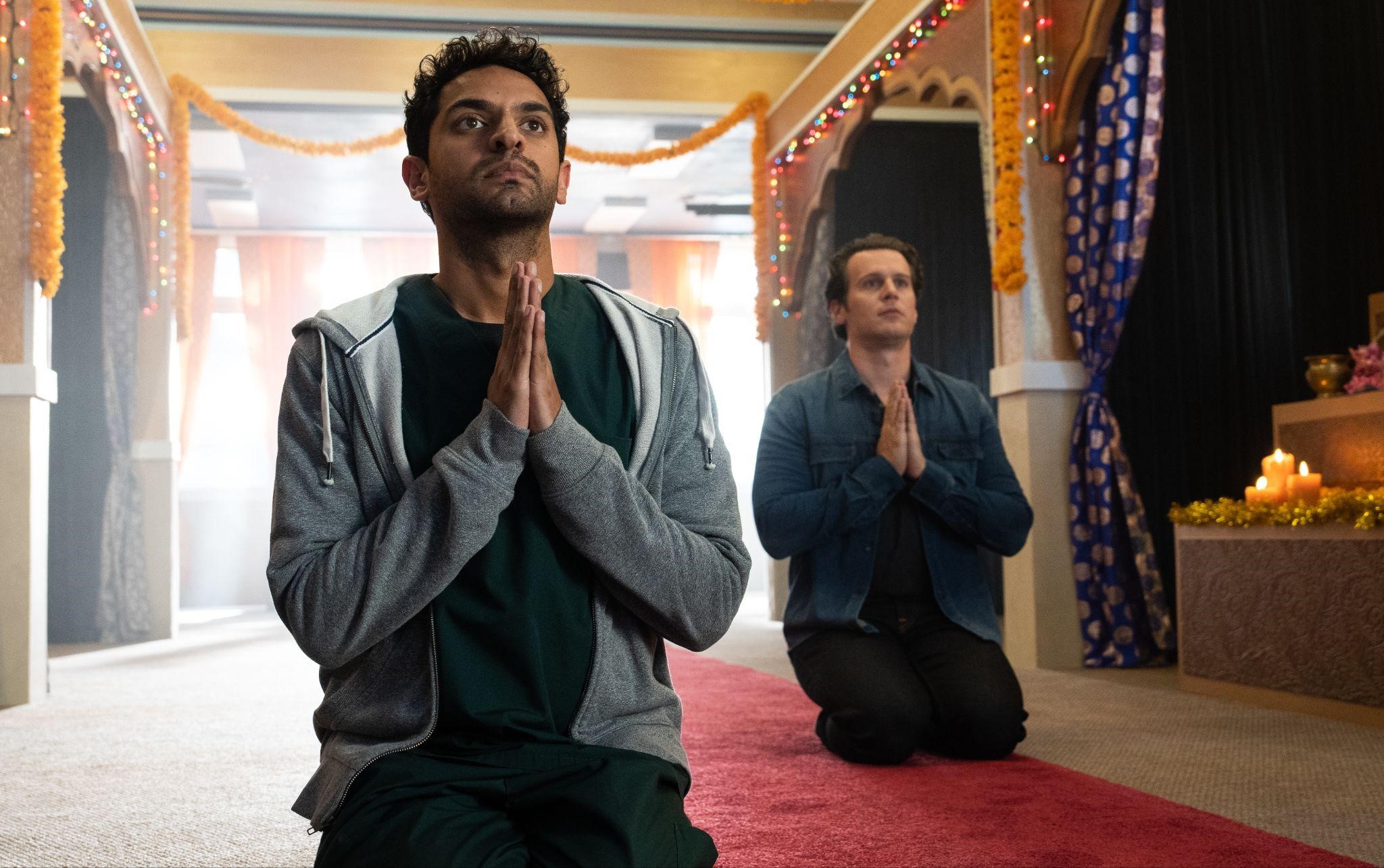Director: Roshan Sethi
Writer: Eric Randall
Stars: Karan Soni, Jonathan Groff, Sunita Mani
Synopsis: When Naveen brings his fiancé Jay home to meet his traditional Indian family, they must contend with accepting his white-orphan-artist boyfriend and helping them plan the Indian wedding of their dreams.
A film can make you experience love at first sight. The introduction, the first swell of music, and the way the camera is placed or moves can cause a flush of your skin and a quickening of your pulse. As the film goes on, that love will either flourish or fade. For A Nice Indian Boy, that love will most assuredly flourish.
There is an elegant energy to the film that feels less melodramatic, but no less cinematic than other rom-coms. It’s due, in large part, to director Roshan Sethi and cinematographer Amy Vincent. The camera pushes in and pulls back in equal measure. There’s a terrifically shot scene where Jay (Jonathan Groff) is walking away from a difficult family meeting with Naveen’s (Karan Soni) parents. The camera follows Jay down the walk, but when he’s in the car, the camera goes back to Naveen to watch Jay drive away. The meet-cute between Naveen and Jay is also a superb example of how to effectively use close up to enter a character’s thoughts. We crush as hard on Jay as Naveen does staring at that incredibly handsome face. There are many scenes like that where the movement of the camera helps to tell the story.
The editing also bolsters the storytelling. Editor Stephanie Kaznocha takes the traditional tropes of rom-coms and adds a twist. The typical rom-com has a first date scene and then a download with the best friend. A Nice Indian Boy upends this idea by starting with the date and suddenly cutting to Naveen and his friend Paul (Peter S. Kim), to get Paul’s reaction. In this simple cut, we learn Naveen is telling the story as it plays out for us. This reaction in near real time is refreshing and heightens the comedy as the reactions are funnier in the moment than they would be with a little distance. Refreshingly, there are a couple of tropes turned and made fresh by this film.
That idea comes from the story. While A Nice Indian Boy has the traditional rom-com structure, there are elements that make it unique. Writer Eric Randall’s adaptation of Madhuri Shekar’s play, also titled “A Nice Indian Boy,” blends the story well into film. The film never feels like it is staged or confined, but it breathes and expands into a world more than a play can. The writing is sharp and witty and touches on an aspect of queer life that many films that have a gay romance tend to overlook in favor of a more dramatic expression of familial disquietude toward queerness.

It’s less rare now to have an acceptance of queerness within a family. Our culture has shifted just ever so slightly and now a coming out scene isn’t always chaotic. Yet, A Nice Indian Boy touches on a very salient point that it is one thing to accept the idea of a family member’s queerness and it is quite another to be confronted with it. The exploration of shame, both from the perspective of Naveen and his father Archit (Harish Patel), isn’t only present to build toward a catharsis, but to dig deeper into why a parent may be uncomfortable with queerness in their child. It’s an exploration of the complicated relationships we can have with our family members when they haven’t examined their own fears and shame. It’s about how that shame is passed on to the children who maybe feel open and honest in their personal lives, but can’t live that way at home.
The way this idea and concept lands is in large part due to Karan Soni’s terrific performance. He plays the soft-spoken and shy Naveen so well. The deep well of emotions he feels is written on his face and in his posture. His timing is, as always , perfectly and outrageously funny. He is matched by the fearlessness and gravitational pull of Jonathan Groff. Groff sings like an angel, has an angel’s face, but can express vulnerability with a slight downtick of his lips and a change in his posture. They make an odd, but incredibly believable couple.
A perfect rom-com is nearly impossible. The truth is when you have to have the tropes to make the genre function and flourish, you lose some of the authenticity of the couple in front of you. Many of us ignore that in favor of good chemistry and a cute couple. It’s very easy to ignore A Nice Indian Boy‘s faults because it tells a story that feels familiar, but forges its own path. We need more queer rom-coms and it will be easy to welcome A Nice Indian Boy into that growing canon.






